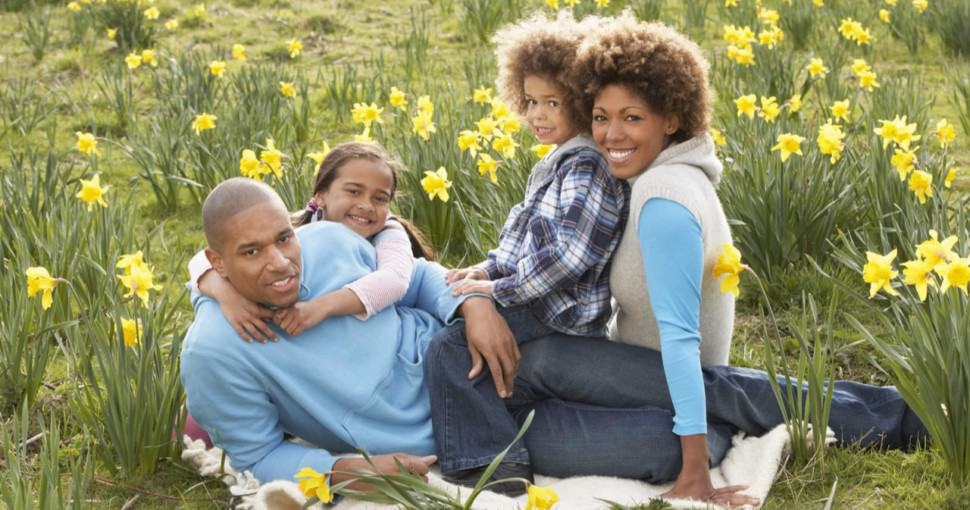Daffodils must be one of the cheeriest flowers in a garden. Their sunshine yellow blossoms lift the spirit and inspire peace. William Wordsworth was prompted to write his poem about daffodils concluding, “And then my heart with pleasure fills / And dances with the daffodils.” Surely a flower so attractive could not be poisonous?
Contents
Daffodils contain bioactive alkaloids and calcium oxalate in all parts of the plant. The highest concentration of the poison is in the bulbs. Symptoms include contact dermatitis, nausea, vomiting, diarrhea, and severe abdominal pain. Daffodils are toxic to people, dogs, cats, and horses.
It is sometimes mind-boggling to imagine how an ornamental plant would poison someone. Daffodil poisoning is a surprisingly common occurrence in people.
Knowing that daffodils are poisonous, they can be planted strategically to deter certain unwanted animals in the garden such as groundhogs, moles and voles.
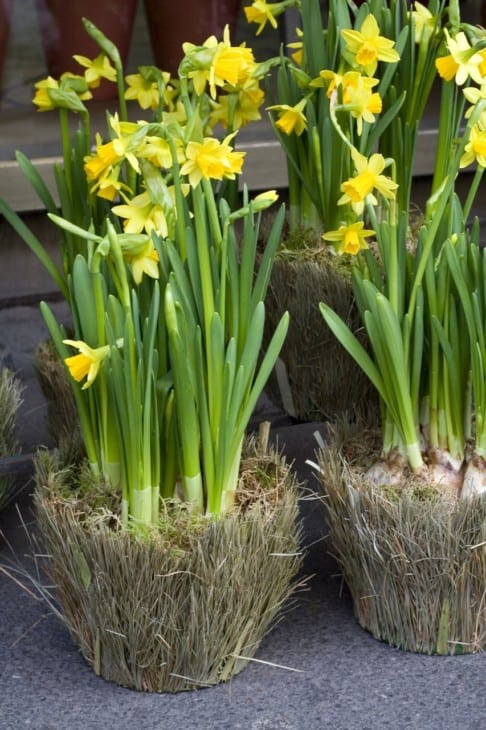
What Poisons Do Daffodils Contain?
Daffodils contain two basic kinds of poison which occur throughout the plant. The highest concentration of both toxins is found in the bulb, especially the outer layers.
Calcium oxalate occurs as fine microscopic needle-shaped crystals that stab the skin, oral mucosa, and the lining of the gastrointestinal system. Oxalates are highly acidic, which further irritates the skin and causes contact dermatitis.
The second type of poison is bioactive alkaloids, namely lycorine, galanthamine, and narciclasine. These alkaloids generally cause gastrointestinal upset, including nausea, vomiting, diarrhea, and excruciating stomach cramps.
Nausea induced by ingesting daffodils does not respond to most anti-nausea medicines. Doctors report that the only anti-emetic that has any effect is ondansetron.
The extent of the symptoms is influenced by the amount of the plant ingested. Where large quantities are consumed, there can be hallucinations, convulsions, and abnormalities in cardiac function. Seizures and death may occur.
How Do Daffodils Poison People?
The most commonly seen form of daffodil poisoning is known in gardening circles as lily rash. It is contact dermatitis seen mainly on gardeners’ hands when planting daffodil and lily bulbs. The calcium oxalates irritate the gardener’s hands. After repeated exposure, a painful burning rash appears.
Wash your hands well under running water and apply soothing lotions or aloe gel if you have lily rash. If the lily rash is severe, you may need to see a doctor to obtain a corticosteroid cream.
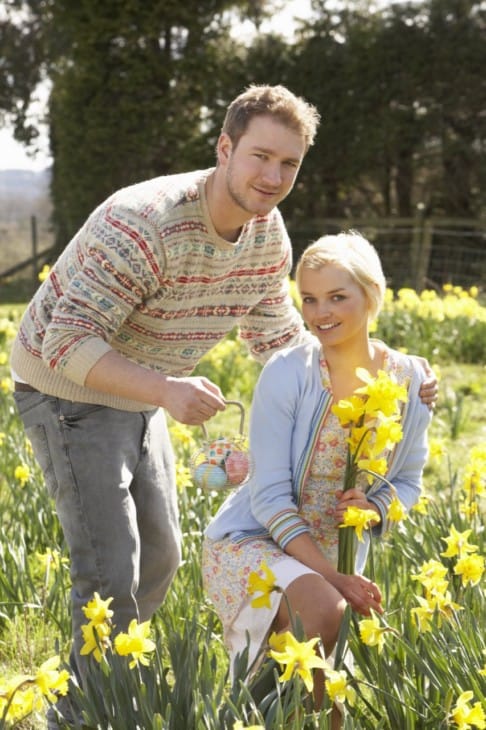
Many people accidentally ingest daffodils every year in countries all over the world. Daffodil bulbs look remarkably like onions. People who grow vegetables and also grow daffodils may mistake the two bulbs.
Daffodils are often sold in grocery stores next to the vegetable aisle. Shoppers may accidentally pick up daffodil bulbs instead of onions. Daffodil leaves resemble Chinese chives and may be accidentally ingested.
In 2015 there was a campaign in England to inform grocery shops of the dangers of daffodils. Stores were encouraged to position daffodils for sale well away from the fruit and vegetable section. Clear signage indicating that these were daffodils and not food was advised.
Small children are drawn to bright colors, and daffodil flowers certainly fall into that category. This tempts them to put the plant into their mouths. Generally, their mouths begin burning immediately, preventing further biting or swallowing.
Children must be carefully monitored as excessive throat pain from eating daffodils can cause dehydration. If daffodils are swallowed, it is best to drink water or milk to try and flush the throat.
Are Daffodils Toxic To Cats And Dogs?
Daffodils are toxic to both canines and felines. It is usually curious young animals that chew on daffodils. It is hoped that they will be quickly discouraged once their mouths begin burning, but some animals persist despite this.
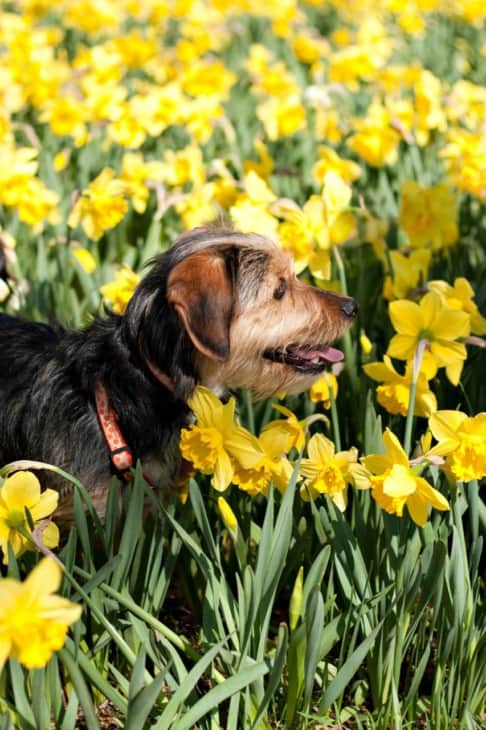
Animals are more vulnerable to the alkaloids in daffodils than humans. Dogs and cats have more severe symptoms from smaller amounts of ingested daffodil. They show the following symptoms;
- Hypothermia
- Dangerously low blood pressure
- Slow heart rate
- Vomiting
- Diarrhea
- Dehydration
- Salivation
- Irritation and burning of the oral mucosa
Daffodil poisoning persists for longer in dogs and cats. It can cause rapid death, particularly in very young or small animals. This is an emergency. Get your pet to a veterinary clinic without delay.
Give the veterinarian detailed information on your pet’s symptoms and how much of the plant was eaten. Take note if it was only the leaves or flowers or if the bulb was consumed as well.
Are Daffodils Toxic To Horses?
Daffodils do not often occur in horse fields or paddocks unless native to the country. They are toxic to horses and can cause neurological symptoms as well as colic. Uncoordinated movements, problems with balance, and convulsions can result from a horse ingesting daffodils.
Horses do not usually eat daffodils as they are not palatable. There may be ingestion of daffodils in instances where there is limited grazing or some inquisitive young foals.
It is essential to get veterinary help as soon as possible if you suspect your horse has eaten daffodils or you see any of the symptoms mentioned above.
Do Daffodils Poison Other Cut Flowers?
Daffodils are often sold in clusters and must be used cautiously in mixed flower arrangements. The reason is that daffodils are not good vase mates with other cut flowers.
When daffodils stems are cut, they secrete a thick mucilage containing toxic alkaloids. The alkaloids can cause other cut flowers to wilt prematurely. Some flowers, such as tulips, turn yellow and die quickly.
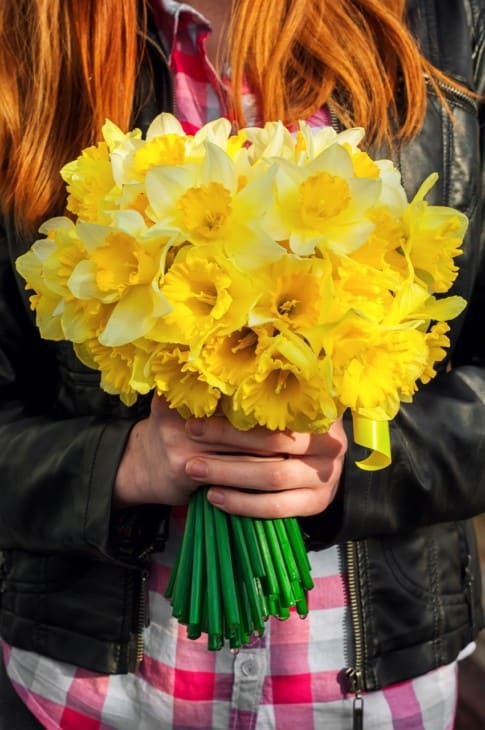
The mucilage also contains sugars and polysaccharides, which feed bacteria. The water in the vase becomes infected by the bacteria. They block water and nutrients from being absorbed by the xylem of the flower stems, and the flowers die as a result.
Some flowers, such as roses and irises, can be put in a vase with daffodils as they use alkaloids to slow down the aging of the flower. Certain chemicals can be added to the vase water to counteract the effects of the daffodil mucilage.
Conclusion
Daffodils are attractive flowers, but care must be exercised when planting them in gardens where children and pets are present. If you grow daffodils and vegetables, make sure you do not have a case of mistaken identity and accidentally poison your family.
Daffodils should be used with caution in cut flower arrangements. The vase water should be viewed as toxic and handled appropriately.

